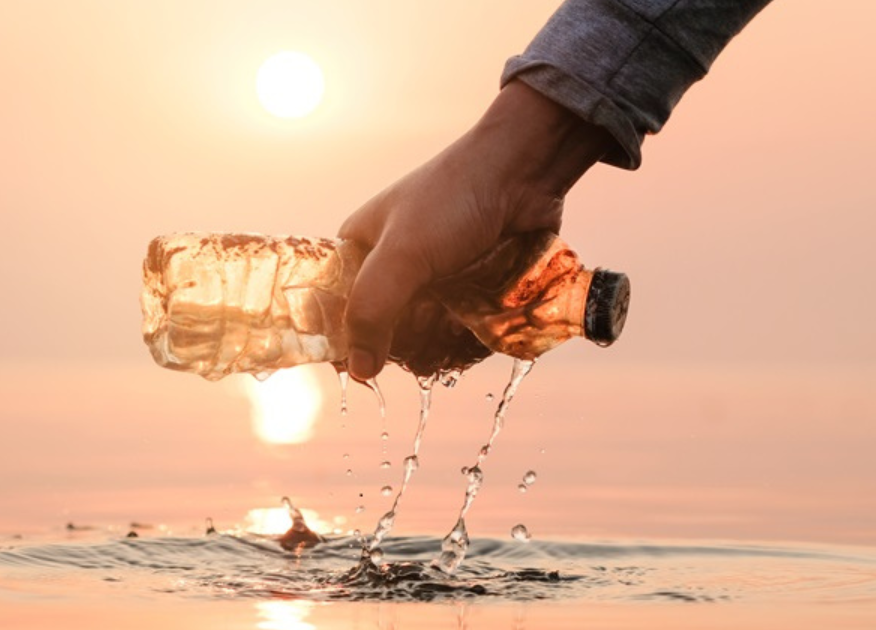Once hailed as a modern marvel, plastic now haunts our planet like a relentless pandemic. The convenience that plastic offers has ensnared us, but the aftermath of its usage has been colossally devastating. One cannot avoid it anywhere, whether at the bottom of the ocean or high in remote mountains. Plastic pollution is everywhere, in every corner of our planet, and it is laying waste to our ecosystems.
Since its invention in 1907, plastic production has skyrocketed from 2 crore tons in 1950 to 390 crore tons in just 71 years. It is said to reach almost 148 crore tons by 2050, which is three times the world’s population today, which is extremely concerning and requires our immediate collective attention.
However, what made plastic so widely used in the first place?
It is versatile, durable, and low-cost. However, this accessibility comes with a price tag—a price tag so heavy that it has cost a million lives on land, rivers, and oceans. Every year, almost 1 lakh marine animals die from either ingesting plastic or getting entangled in it. More than 10 lakh sea birds die annually from plastic. Even we humans ingest up to 18 kilograms of plastic in a lifetime.

How do humans end up consuming plastic? Microplastics. Alarmingly, plastic has already entered the food chain. Since plastic does not biodegrade, it is even harder to remove it from our food chains. We ingest microplastics through our food, the air we breathe, and the water we drink. They have been found in our digestive tracts, lungs, and blood. Studies reveal that they can cause chronic illnesses like cancer, diabetes, obesity, or even infertility, to name a few.
These exposures happen right in our homes, in household dust, carpets, and other textiles. Eighty percent of water samples collected from cities on five continents revealed the presence of microplastics. They are everywhere; and it seems like there is no escape from them.

But there is. There are measures that focus on moving away from plastic to a more sustainable ecosystem.
To name a few, the UNEP (UN Environment Programme) has developed Reuse, Recycle, Reorient, and Diversify.
‘Reuse’ refers to getting rid of the throwing away habit by promoting reusable products to reduce the size of the waste produced. ‘Recycle’ refers to designing guidelines to enhance recyclability, among many other activities. ‘Reorient and Diversify’ refers to ensuring sustainability is supported by getting rid of materials such as single-use plastics.
Talking about the measures taken at a national level in India, the goal was primarily to eliminate single-use plastic by 2022, be it manufacture, import, stock, distribution, sale, or use of the material. Instead, sustainable materials were promoted as a replacement to manage plastic waste. In other words, the goal is to reduce, reuse, and recycle plastic waste.
On a national level, a collaboration between India and Australia produced an initiative, the National Circular Economy Roadmap for Reducing Plastic Waste in India, which laid down a defined plan of action to help transform India’s plastic waste economy into a circular economy.
The following is to be achieved by 2030:
- Promote the production of plastic alternatives for use across sectors, followed by faster adoption of alternatives by offering competitive prices and availability.
- Review the operations of the plastics Innovation Hub, established to drive technology development for designing waste and using secondary products produced by the manufacturing and construction sectors.
- Implement green public and circular procurement strategies at local, state, and national levels.
Even though the outcome of resolutions and solutions may seem far from certain, there is a reason to hope. By coming together, rethinking our choices, understanding the repercussions of plastic waste through data-driven insights, monitoring and evaluating, and laying down a roadmap for disembarking towards a more sustainable and plastic-free world. Only then can we hope to win the battle against plastic pollution and ensure a healthy planet for us and our future generations.

References:
Plastic Plastic Facts & Figures – Plastic Soup Foundation
How Many Marine Animals Die From Plastic Each Year? | Earth.Org
3 ways to cut plastic pollution, according to the UN | World Economic Forum (weforum.org)
Plastic Waste Management Campaign: Objectives, Guidelines, & Importance (infinitylearn.com)
23-00249_ENV_REPORT_IACPRoadmap_WEB-230714.pdf (csiro.au)
Kshiti Biswas – Senior Communications Executive, Sambodhi


